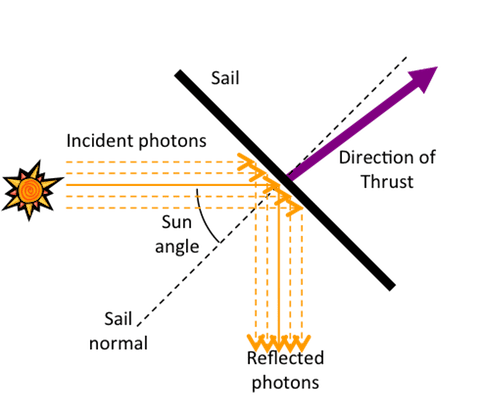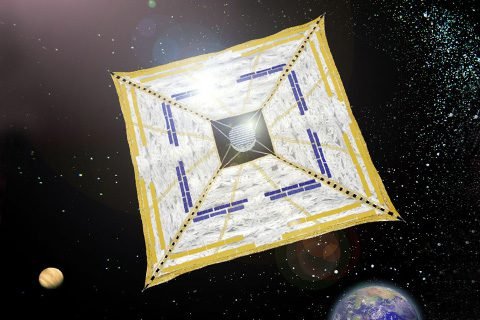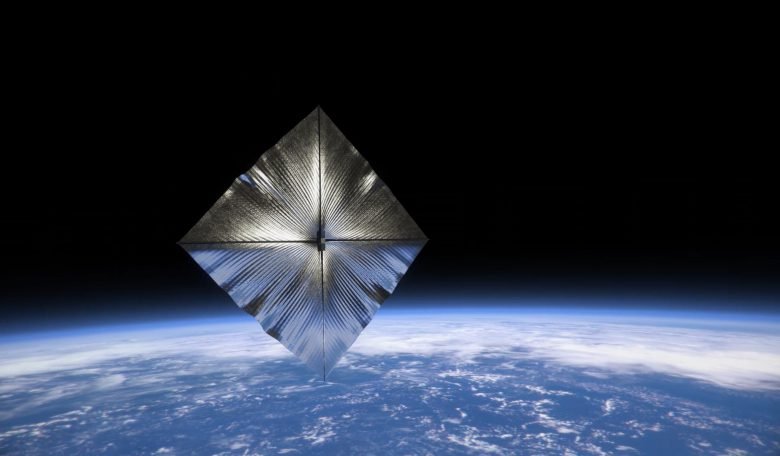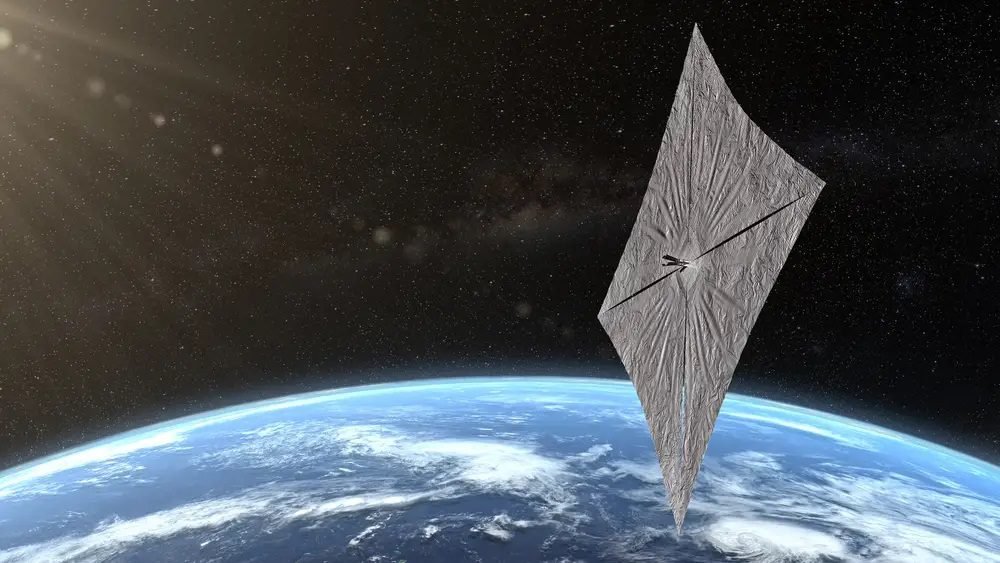The propulsion by solar sail can be an alternative for long space travel. This technology’s operation is this post’s subject.
Operation principle of solar sail propulsion
It works similarly to sailboats moved by wind. The Sun emits light particles called photons. The photons don’t have mass but have momentum when they reach a highly reflective surface, they transfer part of their momentum to the solar sail. Consequently, light boosts the sails with the coupled spacecraft.

To change direction, just turn the sail to adjust the angle with the Sun. The equation of force F that light exerts perpendicularly (90º degrees with the surface) over a surface with total reflection is:
F=\frac{2IA}{c}
Where I is radiation intensity, in W/m^{2}, A is the surface area, in m^{2} and c is the speed of light on vacuum, whose value is 3\cdot 10^{8}m/s. The force exerted by light is very small, but with vacuum in space, it’s enough to take spacecraft for long distances without spending fuel, since there’s a source of light, like a star.
Materials
The material must be light, resistant, foldable, subject to stretching, and resistant to ionizing radiation from space. Currently, solar sails are made of mylar, with aluminum or chrome coating, polyamide CP1 with aluminum coating on one of the sides, or aluminized kapton.
Tests with solar sail propulsion
In 2010, the Japanese Space Agency (JAXA) launched the IKAROS, in an H-IIA rocket, to demonstrate a solar sail for propulsion which also collected solar energy for electricity generation, through thin film solar panels.

On April 23 this year, NASA launched, in an Electron rocket from Rocket Lab, the ACS3 mission to demonstrate the operation of solar sail propulsion. A nanosatellite built by Nanoavionics will test the solar sails in space.



